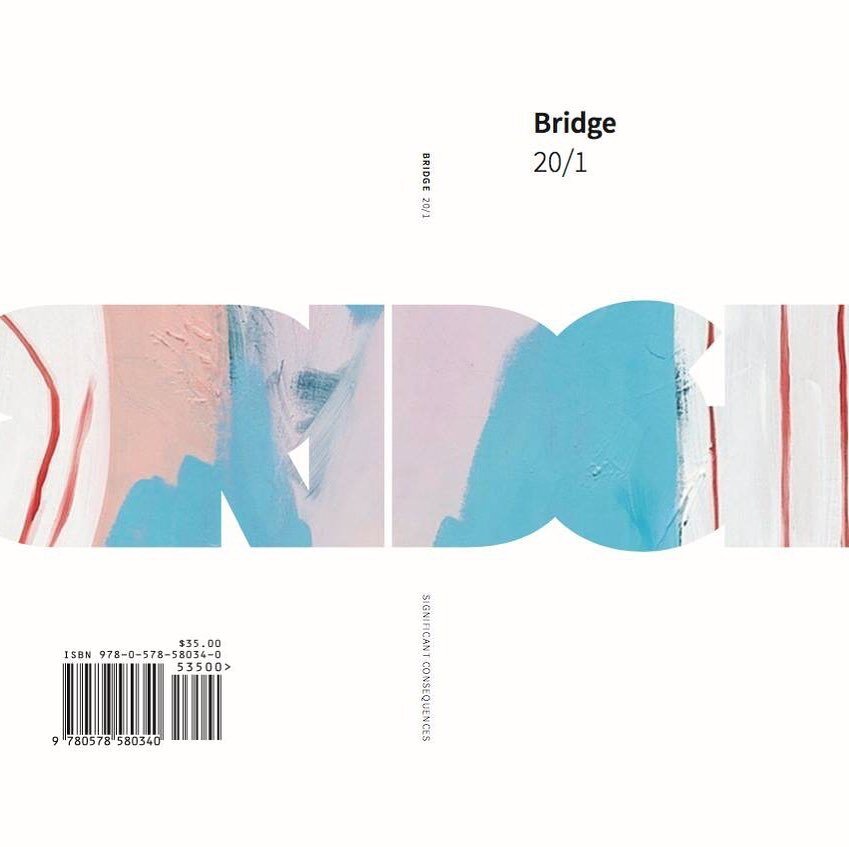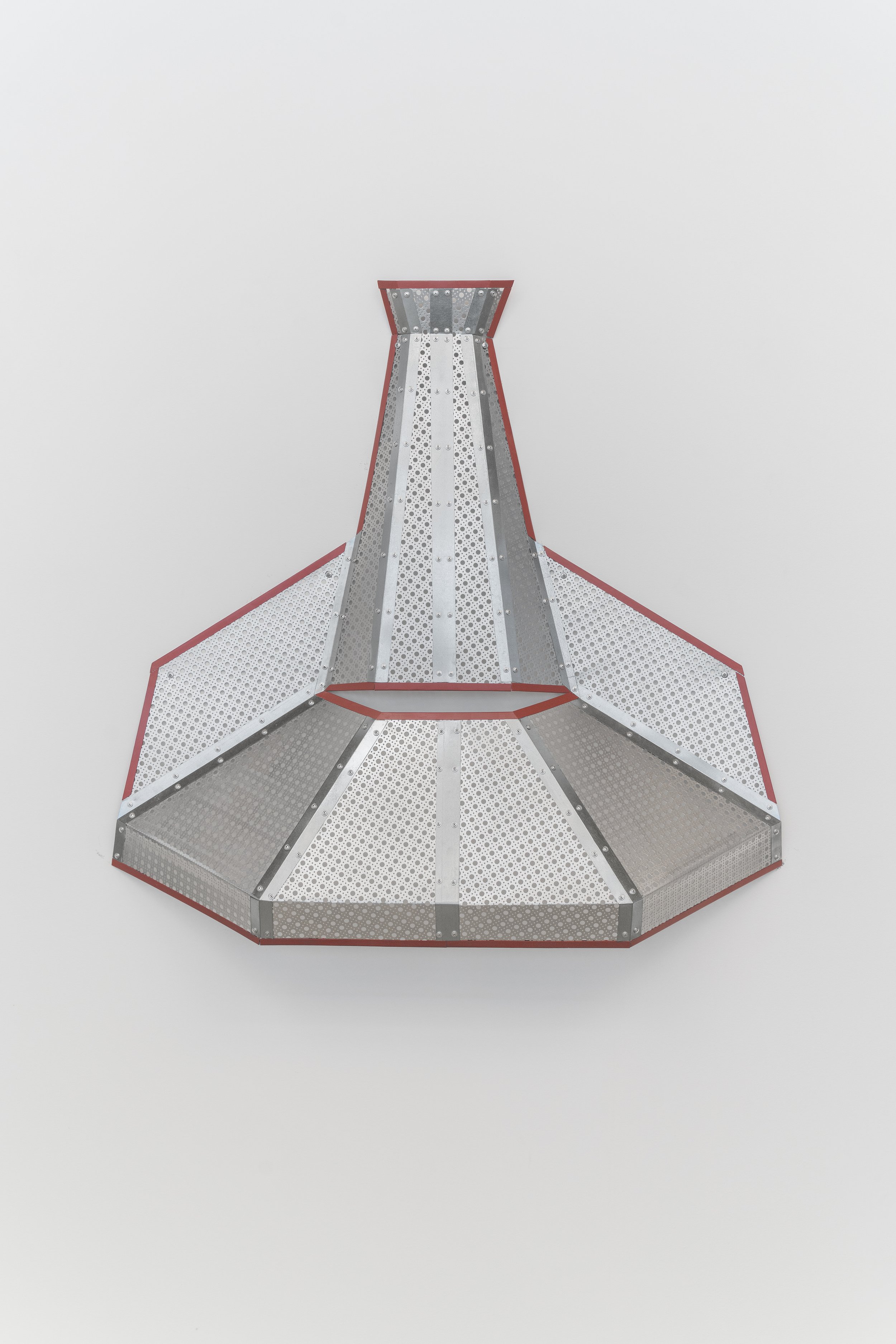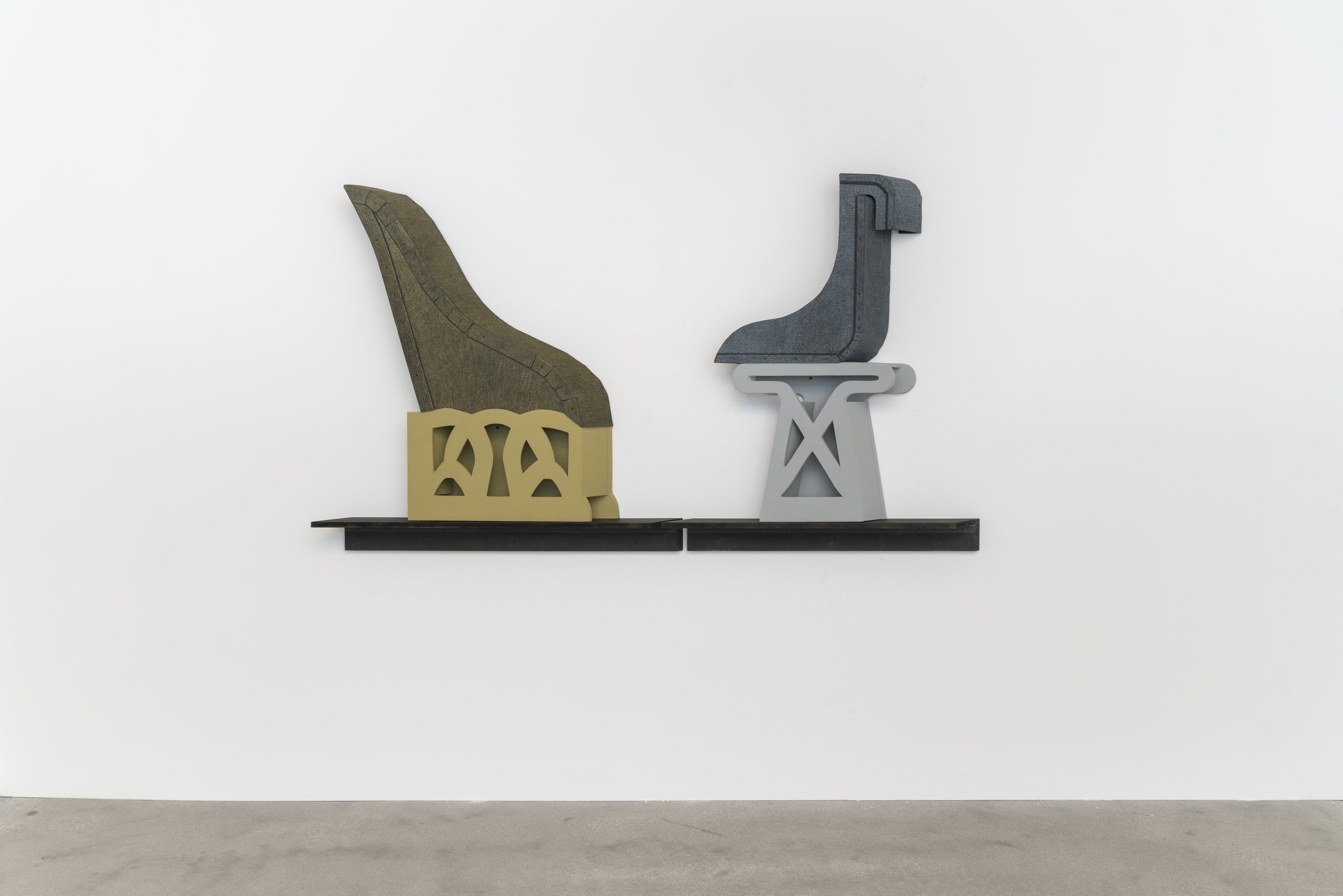REVIEW: Diane Simpson at Corbett vs Dempsey
Diane Simpson, “Quilted Settee,” 2023. Image courtesy of the artist and Corbett vs Dempsey.
REVIEW
Diane Simpson
Corbett vs Dempsey
2156 W Fulton St.
Chicago IL 60612
November 17—January 13, 2024
By Kristin Mariani
This is my fourth season as Couture Editor of Bridge. I typically cover subjects related to fashion, and it is through that lens that I approach Diane Simpson’s exhibit at Corbett vs Dempsey. The artist has shifted her focus, in this new body of work, from articles of dress that surround the human body, to seating structures that offer support for it. Upon entering the gallery, I immediately spot a shiny sculpture hung on the distant wall. The object attracts me like a magpie. I swoop in, weaving my body through the flock of attendees to get a closer look at the work.
Quilted Settee is a silver wall relief, fit and flared with lines that resemble a gored princess dress cut from steel sheet metal, punctured to resemble an interlaced caning pattern. The object is cleverly fluted with flat, angled planes, and red piped seams that visually confuse the convexity of a figure with the concavity of a chair. Many of Simpson’s sculptural forms, whether referencing architecture or clothing, have a figurative quality, acknowledging forms built for human bodies.
This is physical work that Simpson makes by hand. She patterns, cuts, notches, and binds with the logic of a dressmaker; she saws, drills, joins, and sands with the artisanal mastery of a carpenter. Simpson conceives her works with material knowledge, and a fluid thought process guided by a formidable inner compass. As an artist who has been making work for nearly half a century, Simpson is at her heights of experimentation. At the same time, Simpson’s work is determined, crafted with clear specificity.
In the gallery, the location of one’s sightline determines how one sees these sculptures, and there is something to see from every angle. Corbett vs Dempsey’s placement of Simpson’s ten sculptures reorients the logic of placement. The work is installed at many levels: four objects are placed on the floor, five relief sculptures hang on the walls, and one object floats from the ceiling. The surprising arrangement defamiliarizes these extraordinary objects, hovering somewhere between what is recognizable and what is perplexing.
Diane Simpson, Drawing for Tut Tut, 2023. Image courtesy of the artist and Corbett vs Dempsey.
Prevalent tastes in furniture have a long history of alignment with contemporaneous tastes in dress. I consider Egyptian Art as I study the diptych relief, Tut Tut. In my studio visit with Simpson last week, the artist shared numerous reference images, including one taken from a page of historical profile renderings of Egyptian furniture. The reference image is a starting point for Simpson, visual fuel for the drawing and construction of a singular sculpture. Simpson extracts elements from a flat image, and recasts it dimensionally. First, she makes a preliminary axiometric drawing on graph paper, then constructs a flat pattern and maquette to work out the angles, articulations, and proportions of the final piece. Simpson draws with precision in her visioning of how the piece will evolve beyond the original reference image. She also draws directly on the sculptures, with crayons and coloring pencils. Simpson’s waxy touch on the surface impresses without indentation.
Diane Simpson, Tut Tut, 2023. Image courtesy of the artist and Corbett vs Dempsey.
Tut Tut is not the only work that alludes to coupling. In the adjacent floor sculpture, His and Hers Duchesse, a stereoscopic moment occurs where the distinct forms in Tut Tut seem to optically blend, or consummate, into one slippery slope. Simpson reveals a fluidity with her non-fluid materials in this yoking of his and her forms. Positioned hip level before this work, one surrenders to the joy of standing.
Diane Simpson, His and Hers Duchesse, 2022. Image courtesy of the artist and Corbett vs Dempsey.
Skewed Love, Tête-à-Tête, and Discreet Conversations continue the theme of pairs, domestic bonds, and intimacy. The placement of sculptures defies a conversational seating arrangement, with each piece containing its own dialogue, giving viewers plenty to talk about. In the floor sculpture, Skewed Love, the front and back are bound and riveted in mutual opposition, with the back of this work as much a facade as its front. Tête-à-Tête, a relief sculpture made from corrugated cardboard, is mitered with an angled opening for a semi-closed, or semi-open, conversation. Discreet Conversations foreshortens an intimate moment on a loveseat, where others might be within listening range.
Diane Simpson, Palanquin, 2023. Image courtesy of the artist and Corbett vs Dempsey.
How things are hung or positioned suspends one's recognition of function and referent, and there’s a warp in time in the bend of the angles crafted by Simpson. Palanquin, suspended from a single pole in the north gallery, oscillates between its nameable state and elusive associations. Made in reference to an image of a 19th century litter, the absence of bearers suggests one’s conveyance is imminent. In the pursuit of transporting humans to other places, Simpson single-handedly flies us.
Kristin Mariani is an artist, and editor of the Bridge Couture section.
Like what you’re reading? Consider donating a few dollars to our writer’s fund and help us keep publishing every Monday.







